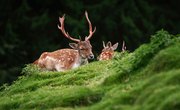
How do flowering plants reproduce? Plants have sex. It’s true! While it may only be a vaguely similar process to the sex participated in by humans and animals, plants engage in sexual reproduction quite often. There is a series of steps that plants go through to create offspring. It isn’t the most romantic process, but it can be fascinating nonetheless. Learning how plants reproduce sexually can give you a better understanding of the life cycle of the various plants species. Sexual reproduction in flowering plants, also called angiosperms, is the easiest to understand.
Step 1: Pollination
Pollination is the first required step in sexual reproduction in plants. The male portion of the plant produces the pollen – typically in the flower. A long filament, called a stamen, holds the bits of pollen at the end and one of several pollinators take the pollen grains to the female part of the flower, which is called the pistil.
Pollinators can be insects or birds drawn to the plant by the colorful flowers and fragrance for the nectar inside. As they enjoy feeding on the plant, the pollen sticks to their bodies and is then carried away to another flower that may contain a pistil. The wind can also carry pollen to other flowers, as can water in some plant species.
Some plants have male and female parts on the same flower and can self-pollinate, while other plants produce male and female parts on separate plants. In any event, pollination requires the movement of pollen from the stamen to the pistil so the steps of sexual plant reproduction can continue.
Step 2: Fertilization
If conditions are favorable, fertilization can happen when the pollen arrives at the female part of the plant. The pistil is comprised of the stigma, style, ovary and ovule. The pollen travels down the style, which connects the stigma to the ovary of the plant. The ovary is the female part of the plant where the ovules begin to grow as a result of fertilization.
After fertilization, the flower eventually withers and the ovary begins to grow larger and form a fruit. This may be an actual fruit, nut or berry depending on the plant species. The fruit grows and develops seeds inside that are protected by the flesh of the fruit.
Step 3: Seed Dispersal
The seeds inside the fruit of a plant must be redistributed to make new plants, a process called seed dispersal. In nature this often happens when the fruit ripens and falls off the plant onto the ground. The flesh of the fruit rots and exposes the seed inside, which is fertilized by the organic material from the rotten fruit.
In other instances, the seed dispersal happens when animals brush against certain plants and get the seeds stuck in their fur and transport it to another spot where it falls off. This is common with plants that have a burr-type fruit, like burdocks. Wind, rain and other natural elements may combine to move the seed to a new place. Seed dispersal is essential for moving seeds away from their parent plants, so they can access the soil, sunshine and nutrients in order to thrive.
Step 4: Germination
Germination is the actual birth of the new plant. Once the seed has emerged from its fruit, it will hopefully be in the proper environment to induce a sprout. The process of sprouting into a new plant is referred to as germination.
This is the final stage of sexual plant reproduction. The new plant grows and forms its own male and female parts and starts the life cycle all over again.
References
About the Author
Lee Morgan is a fiction writer and journalist. His writing has appeared for more than 15 years in many news publications including the "Tennesseean," the "Tampa Tribune," "West Hawaii Today," the "Honolulu Star Bulletin" and the "Dickson Herald," where he was sports editor. He holds a Bachelor of Science in mass communications from Middle Tennessee State University.
Photo Credits
iSailorr/iStock/Getty Images
